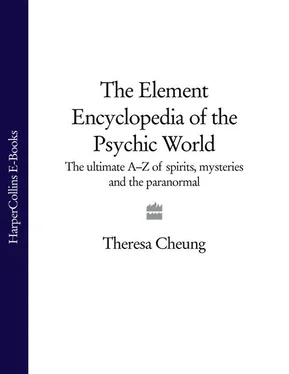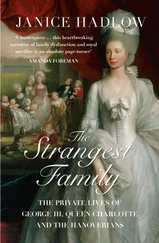Do something mundane or physical to bring you back to earth.
While psychical researchers continue to investigate automatic writing as evidence for the existence of the spirit world, the field of psychology has adopted automatic writing. Psychologists use it as a way for the unconscious mind to express thoughts and feelings that cannot be verbalized. Automatic writing continues to be used as a therapeutic tool to this day. Some critics warn of dangers in automatic writing -they claim that the writer is vulnerable to harassment from the evil-minded dead. However, psychologists maintain that the real danger is in exposing material from the unconscious that has been repressed.
Automatism is divided into two categories: motor automatism and sensory automatism. Motor automatisms are unconsciousmovements of the muscles, which seem to be directed by supernaturalguidance. The most common forms of motor automatism are automatic writingand automatic painting or psychic art, and other creative pursuits such as speaking, singing, composing and dancing. Dowsingis a type of motor automatism, an extrasensory guidance influenced by the movements of the rod held by a dowser. Other types of motor automatisms include impulsive behaviour, such as deciding to do or not do something at the last minute without knowing why, sudden inhibitions and sudden physical incapacities.
Sensory automatisms are thought to be produced by an inner voice or visionand can include apparitionsof the living, inspirations, hallucinations and dreams. Hallucinations were once assumed to be caused by physical disorders, but Edmund Gurney, an early psychical researcher and a founder of the Society for Psychical Research, established that paranormalvisions and sounds can occur without the presence of physical disorders.
After automatic writing and drawing, automatic music composition is perhaps the most common form of automatism. An unusual case was that of a London woman called Rosemary Brown, who, although she had limited musical ability, began in 1970 to compose music that she said was channelledto her from dead composers such as Chopin, Liszt and Beethoven. Recordings were made, and the works did indeed resemble the various styles of the composers, but critics declared them not as good as definitive compositions by these musical geniuses.
Problems associated with automatisms include compulsion, obsession and a feeling of possession. The practice may grow until a person feels taken over by it. Some people talk of possession by demons, but psychologists say that the effects are created by paranoia, not demons.
Since ancient times, inspired activity has always been attributed to the divine, the supernatural or the spirits, but today’s view is that automatisms are products of ESPor secondary personalities who produce knowledge or information that has been repressed or forgotten.
According to Celtic legend, a mystical land of immortal heroes where the enchanted sword Excalibur was forged and where a mortally wounded King Arthur was taken after a bloody battle.
The story of King Arthur may be based on a historical figure of a Celtic king of the sixth century, who defended his kingdom against Saxon invaders, but it is the legends of King Arthur that have had a timeless, mystical hold over people’s imagination for centuries. According to legend Arthur came to power when he pulled a magical sword from a stone with the help of the wizard Merlin, an act that proclaimed his royal heritage. He started the Order of the Round Table, peopled by noble and virtuous knights, and married the beautiful but adulterous Guinevere who betrayed him for his best friend Lancelot. Arthur was mortally wounded by his treacherous nephew, Mordred, and is said to be buried on the mythical Isle of Avalon, from where he will rise again in Britain’s hour of need.
There is a tradition that Glastonburywas the Isle of Avalon. In 1191 the monks of Glastonbury unearthed, from 16 feet under the ground, an oak coffin that they said was Arthur’s. They showed an inscription: ‘Here lies beneath the renowned King Arthur with his beloved Queen Guinevere his second wife in the Isle of Avalon’ on a lead cross, which they said had been found in the coffin.
With its miraculous weapon of destiny, its goddess-like Lady of the Lake appearing by moonlight from the water and, most of all, the mysterious realm of Avalon, where Arthur journeys by water to be healed from death, the Arthurian world shimmers with a Celtic supernatural glow. Like a faraway, half-heard song, Avalon conveys a sense of something lost forever, never to be found - the mystical quest for the lost land, the lost world, the lost self and lost psychic powers.
Derived from the Sanskrit word avatora, which means ‘descent’, avatar is used in Hinduism to denote a god who has descended, by way of incarnation, to either human or animal form, coming into this world for the duration of one lifespan. An avatar is believed to be a mediator between people and the divine.
An avatar is similar to the Christian figure of an incarnated being but is different in two ways. First, a Hindu god can become incarnate in many places at the same time through partial avatars (amshas); second, the avatars do not fully participate in human activity or lose the knowledge and power of their divinity.
Exceptional holy men and women in India are called avatars. Hindus accept Gautama, Buddha, as an avatar. Vishnu, sky god and protector of the universe, is most famous for his numerous avatars, which include Krishna and Rama, but other gods, such as Shiva, also have avatars. Many charismatic leaders, such as the Indian mystic Chaitanya (c.1486-1533), have been regarded as avatars. In our own time, Ammachi - Mata Amritanandamayi -the South Indian woman who was given the Gandhi-King award at the United Nations in Geneva in 2002 for her promotion of non-violence, and who greets her long lines of followers by giving each person a warm hug, is considered an avatar of the Great Mother.
The bhakti (devotional) movements of Hinduism have often centred round avatars who are supposed to possess psychic abilities and paranormalpowers, such as the ability to levitateor bilocate.
A village in Wiltshire, England, eighty miles west of London, and site of the Avebury stone circle, one of the oldest prehistoric monuments in Britain. More extensive than Stonehenge, Avebury is large enough that it is said more than a quarter of a million people could stand within the boundaries of its circle. The circle was in active use in later Neolithic/early Bronze Age times, between 2600 BC and 1600 BC, so it pre-dates the Druids.
The Avebury circle was probably constructed by people from the Beaker culture. It is the largest stone circle in Europe; its 100 standing stones, reaching up to 14 feet high, mark a circle that is 1,100 feet in diameter. Another nearby landmark, Windmill Hill, bears an earthwork on top and may pre-date Avebury as a cattle market or ritual site. The purpose of Silbury Hill, yet another nearby landmark and Europe’s tallest man-made mound, remains unknown.
No records survive attesting to the original purpose and uses of the Avebury stone circle, and excavations have yielded few insights. According to theories Avebury may have been used for religious festivals to honour the Goddess, or it may have had astronomical purposes, as the stones align to the May Day sunrise. It is believed by some that the Avebury stones are repositories of Earth and psychic energy, which can be detected by clairvoyanceand dowsingand that tapping the stones can enable communication with other megalithicsites. Such psychic energy may be responsible for paranormalphenomena that have long been reported at this site, including strange lights drifting on the ground and eerie small figures and apparitionsflitting around the stones. In the 1980s Avebury became a major site of mysterious crop circles, geometric patterns made in arable fields that defy explanation.
Читать дальше


![Theresa Cheung - The Dream Dictionary from A to Z [Revised edition] - The Ultimate A–Z to Interpret the Secrets of Your Dreams](/books/692092/theresa-cheung-the-dream-dictionary-from-a-to-z-r-thumb.webp)









